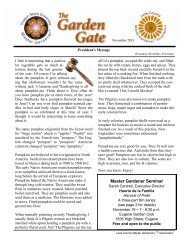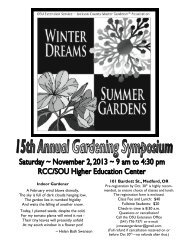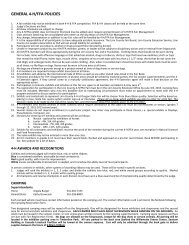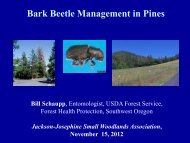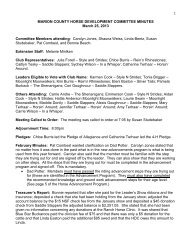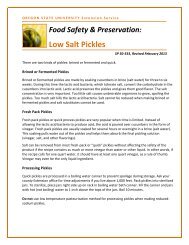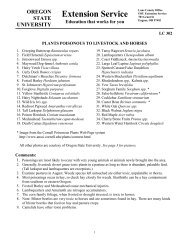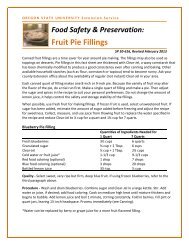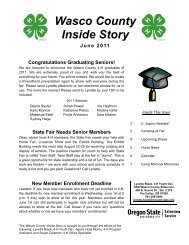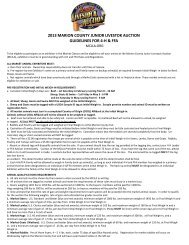food preservation teaching outline - Oregon State University ...
food preservation teaching outline - Oregon State University ...
food preservation teaching outline - Oregon State University ...
Create successful ePaper yourself
Turn your PDF publications into a flip-book with our unique Google optimized e-Paper software.
Mold—caused by <strong>food</strong> not dried enough or not stored properly so that moisture was<br />
re-absorbed by <strong>food</strong>.<br />
Sugar crystals—often happens with overripe fruit. Safe to eat. Will dissolve if<br />
cooked.<br />
Insect infestation.<br />
L. Rehydration and using dried <strong>food</strong>s<br />
Fruits<br />
- Can be eaten as is—no rehydration needed.<br />
- Can be rehydrated by:<br />
1. Pouring boiling water or juice on fruit. Let stand 5-10 minutes.<br />
2. Steam fruit over boiling water 3-5 minutes.<br />
3. Soak in cold water for several hours.<br />
4. Cover with water and bring to boil in microwave. Let stand 5-10 minutes.<br />
5. Soaking fruit first in cold water, then cooking gives a more tender product.<br />
- Chopping fruits<br />
1. Freeze fruit first then crush with hammer or meat cleaver.<br />
2. Put frozen fruit in blender or <strong>food</strong> processor.<br />
3. Cut pieces of fruit with scissors or sharp knife. If fruit tends to stick coat<br />
blade with a little cooking oil.<br />
Vegetables<br />
- Dried vegetables will be tenderer if soaked before cooking. Can take 15 minutes<br />
to 2 hours to plump. Then cook or add to soup or stew.<br />
- Take longer to rehydrate than fruit because more water is lost.<br />
- Do not let soaking vegetables stand longer than 2 hours without refrigeration.<br />
- Vegetable flakes and powders.<br />
- Can use blender or <strong>food</strong> processor to flake or make vegetable powders – great<br />
seasonings.<br />
Food spoilage<br />
- Rehydrated dried <strong>food</strong>s should be refrigerated. Very susceptible to spoilage.<br />
Fruit and Vegetable Leather<br />
A. What is it?<br />
B. Leathers are a chewy product usually made from pureed fruits but some vegetables like<br />
tomatoes also make good leather.<br />
C. What fruits to use<br />
Fresh fruits<br />
- Any fresh fruit will work—good place to use culls, overripe fruit or those not<br />
suitable for canning or freezing.<br />
- Cut away all bruises and spoiled portions.<br />
- Citrus fruits should be used in combination with other fruits because they are so<br />
juicy.<br />
- Fresh fruit purees are usually too thin to use as is-need to be cooked to thicken<br />
or blend with drained canned fruit such as pears or apple sauce.<br />
Page 3





